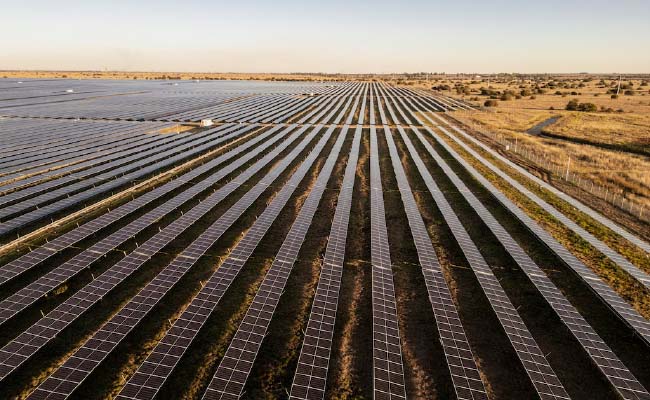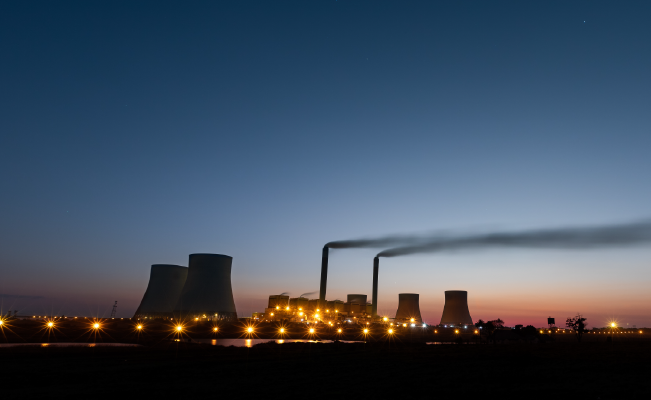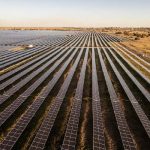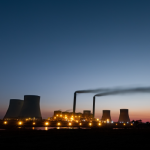This isn’t your everyday clean energy deal.
Discovery Green, a renewables company less than two years old, this week struck one of the largest green energy agreements yet signed in South Africa. But that wasn’t the eyebrow-raising part of it: rather, it was the fact that this was signed with one of the country’s most prolific emitters of CO2, coal miner Glencore.
Under the deal, Discovery will provide 290GWh of renewable energy to Glencore every year for 20 years, allowing the London and Joburg-listed mining giant to replace most of the electricity it uses at four of its South African mines with green energy.
“It’s one of the largest deals we’ve signed yet, and it shows that even for an energy-intensive resources company like Glencore, renewable energy is an economically efficient solution,” says Andre Nepgen, the head of Discovery Green. “We’ve had a decade of rate hikes above inflation, which is difficult to stomach, so this provides a company like Glencore with an option that is already more affordable, and provides them with price certainty.”
This transaction will provide renewable energy to four Glencore thermal coal operations near Emalahleni, including Goedgevonden, Tweefontein, and iMpunzi.
Discovery wouldn’t say how much Glencore will pay, but 290GWh bought from Eskom would typically cost anywhere from R435m to R500m at today’s prices. Assuming a marginal discount on that number implies that Glencore will pay Discovery R8bn over the duration of the deal – a major fillip for the fledgling renewables arm of the insurance company that made its name administering the country’s largest private medical aid.
But if you’re confused about Glencore’s rush into the arms of green energy, you’re not alone.
Glencore, as one of the world’s largest thermal coal producers, is one of the largest CO2 emitters around, with the global Institute for Energy Economics and Financial Analysis saying its expansion plans and limited mitigation actions “raise serious questions about the credibility and financial sustainability of its climate strategy”.
It is a dissonance echoed in Glencore’s mission too, which commits the company to supplying “the metals needed for the energy system of tomorrow, while continuing to responsibly serve the energy needs of today”.
It’s a line the company echoes at every turn. Murray Houston, Glencore Coal South Africa’s CEO, describes this Discovery deal as “part of our strategy to decarbonise our South African operations while maintaining energy security”.
Houston adds that this is Glencore’s way of “supporting South Africa’s energy transition”, while focusing on “long-term sustainability”.
Yet the facts show that Glencore has quite some distance to go. The Carbon Majors Database, run by a global nonprofit called InfluenceMap, says Glencore was one of the 50 largest emitters between 1998 and 2023.
The company, now run by South African Gary Nagle, revealed in its annual reports in May that its total emissions fell marginally last year to 416.4Mt of CO2 equivalent. Nonetheless, Nagle said its goals remain intact: to slash emissions by half by 2035, and to hit a net-zero emissions target by 2050.
‘Not a binary’
So how does one square a renewables deal of this sort with what is happening in Glencore’s wider business? Is this damage control, an effort to drum up good climate PR, or a legitimate mitigation exercise?
Nepgen says that if anything, companies more exposed to the fossil fuels industry are acutely sensitive to the need to alter their energy needs.
“And Glencore isn’t just a coal business,” says Nepgen. “It’s very diversified, with chrome, smelters and other minerals. So to do a deal like this isn’t contradictory at all – we’ve seen a number of companies in the mining space which produce fossil fuels embracing renewable energy.”
This is evident from the deals Discovery Green itself has done – a list that includes Sasol, whose Sasolburg refinery is the largest single producer of carbon emissions on the planet, and Impala Platinum.
Nepgen says it’s an unhelpful binary to say that companies with fossil fuel operations have no interest in the just transition. “Coal isn’t going to disappear overnight. It’ll be around for decades, so it’s a pragmatic compromise for these companies to embrace other forms of energy as part of their mix. When the wind doesn’t blow and the sun doesn’t shine, you’ll need a baseload from other energy forms, whether it is gas, or nuclear or, for the time being, from coal.”
Still, a deal with Glencore is useful marketing for a renewables sector that has battled to overcome the prejudices of policymakers, who still argue that solar and wind could never sufficiently meet South Africa’s electricity needs.
At this year’s Mining Indaba, for instance, mineral and petroleum resources minister Gwede Mantashe declared that “King Coal is back”, and previously, he has attacked the “belief that you can leave coal and move to renewables” as a “technical mistake [that] will never work”.
Certainly, the sluggish pace of the transition hasn’t provided much of a counter argument. By 2023, coal-fired power provided 82% of South Africa’s electricity needs, with wind providing 5.1%, hydropower accounting for 3%, and solar just 2.2%, according to the International Energy Agency. Nuclear energy, largely provided through Koeberg, still accounts for 3.7%.
Nepgen says this illustrates that South Arica is not far down the road of switching to renewable power – but it is not because solar and wind cannot do the job.
“Absolutely, we can run large industries on renewable energy, and we can do it far more economically than relying on coal-fired power. But the reality is, for South Africa’s energy security, you’ll need to have other forms of energy for some time to come too,” he says.
The economics of renewable energy have changed markedly too in recent years. “Fifteen years ago, the technology cost for renewable power was six times what it is now, and that cost continues to come down, shifting the equation,” says Nepgen.
And, on the other side of the equation, Eskom, which relies on coal power, has been pushing up its tariffs to deal with an immense debt burden of R373bn, and municipalities that still owe it R103bn.
This has radically altered the bottom line, which is now this: the cost of renewable energy, from solar and wind, now ranges between 50c/kWh and 60c/kWh – much lower than the national average price of electricity which is 195c/kWh, according to research from the Council for Scientific and Industrial Research.
This illustrates that as much as this sort of transaction works optically for Glencore, it’s also primarily an economic decision. And, now that Discovery has broken the mould with a multinational mining company, you can expect to see far more of this type of transaction.
Top image: Rawpixel/Currency collage.
Sign up to Currency’s weekly newsletters to receive your own bulletin of weekday news and weekend treats. Register here.












The rabbit hole just got deeper …. and more bizarre. Living in a world of spaghetti junctions and loopholes. Excuses for further annihilation. The mind boggles.